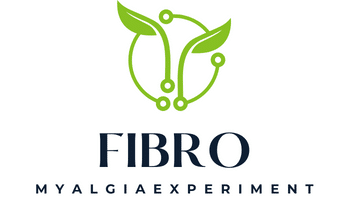Understanding the performance and mechanics of your beloved Honda Accord can be a rewarding and empowering experience. Having a detailed knowledge of what’s under the hood not only keeps your vehicle running smoothly, but also prolongs its longevity. One such component that optimizes your driving experience is the performance shift light indicator. This article will guide you through the process of integrating such a system into your Honda Accord, offering insight into your engine’s performance and alerting you of potential issues before they become costly problems.
Understanding the Performance Shift Light Indicator
Before diving into the integration process, it’s crucial to understand what a performance shift light indicator is and how it functions. Essentially, this device is an element of your vehicle’s engine management system. It informs you of the optimal time to shift up a gear in manual transmission vehicles, thus improving fuel efficiency and reducing wear on your engine.
En parallèle : What’s the Best Method for Soundproofing a Family Minivan for a Quieter Ride?
The shift light indicator works by reading signals from your car’s engine control unit (ECU), specifically focusing on engine speed (RPM). When the engine reaches a pre-determined RPM, the light illuminates, telling you it’s time to shift up. This is especially useful in sport or high-performance driving scenarios where precise shifting is crucial.
For a vehicle like the Honda Accord, which blends comfort, economy and performance, the implementation of such a system can enhance the overall driving experience, especially in Sport and Touring trims that offer manual or semi-automatic transmissions.
A lire en complément : How to Install a Performance Air-to-Oil Cooler on a Chevrolet Corvette for Track Days?
Evaluating Your Honda Accord’s System
Before attempting to integrate a performance shift light, it’s important to evaluate your Honda Accord’s current system. As this operation involves interfacing with the car’s electrical system and engine control unit, it’s crucial to approach this with caution.
Examine the car’s console and dashboard to understand the current setup of lights and indicators. Look at your Honda model’s manual to understand how the engine management system works, as well as how to safely access and manipulate these components. For hybrid models, be aware that the battery system could complicate the process, so extra care will be needed.
Choosing the Right Shift Light Indicator
Choosing the right shift light indicator for your Honda Accord is pivotal for seamless integration and optimal performance. The market offers numerous options, from simple stand-alone lights to multi-stage shift lights that offer more advanced features.
Keep in mind the engine type (gas or hybrid) and the car variant (standard, sport, touring) when selecting your shift light. For instance, higher-performance engines found in Sport and Touring trims may benefit from advanced shift lights with multiple stages and programmable RPM settings. On the other hand, standard or hybrid models might be better suited to simpler systems.
Moreover, consider the aesthetic aspect. Many shift lights come in various colored light options, allowing you to match or contrast them with your vehicle’s interior.
Integrating the Shift Light Indicator into Your Honda Accord
Once you have chosen the right shift light indicator, the integration process begins. This involves wiring the shift light into your car’s existing system. Start by locating the engine control unit (ECU) and identifying the tachometer signal wire, which provides the RPM data to the shift light.
Next, position the shift light on your dashboard or console where it is clearly visible but does not obstruct your view of the road. Depending on the model of shift light chosen, you may need to drill holes for mounting or run wires to the selected location.
For the wiring process, you will need to connect the shift light to a power source, a ground, and the tachometer signal wire. This is the critical part of the installation, and it must be done with care. If you’re not confident about doing this yourself, consider seeking professional help to prevent any electrical damage or potential fire hazard.
Once installed, check the system by starting the engine and observing if the shift light responds to the engine’s RPM. Adjust the shift light’s RPM setting according to your driving style and the vehicle’s performance characteristics.
Handling Potential Problems and Service Maintenance
Beyond installation, it’s important to maintain your shift light indicator and address any potential problems promptly. Routine checks will ensure that the system operates accurately, thus safeguarding your Honda Accord’s engine and enhancing your driving experience.
Common issues include the shift light not illuminating at the correct RPM or not working altogether. Such problems could be due to a faulty connection, a problem with the ECU, or the shift light itself could be malfunctioning. Regular service and maintenance, including checking the wiring and connections, can prevent these issues.
Additionally, remember to keep an eye on other indicators in your car, such as the check engine light and battery light. These are equally important in ensuring your Honda Accord runs smoothly and efficiently.
In summary, integrating a performance shift light into your Honda Accord is a task that requires careful planning and execution. Yet, the improved fuel efficiency, enhanced engine performance, and enriched driving experience make it a worthy upgrade for Honda enthusiasts.
Selecting the Suitable Shift Light Indicator for Your Model
The selection of an appropriate shift light indicator is a momentous decision, as it significantly contributes to the integration process. Various options exist in the market, ranging from the most basic to advanced shift lights that offer a plethora of features.
It’s significant to consider the engine type (gas or hybrid) and the car variant (standard, sport, touring) when choosing your shift light. The Sport Touring models, for example, have high-performance engines that would benefit from a multi-stage shift light. This allows for programmable RPM settings, which can be essential for more spirited driving scenarios. Alternatively, standard or Hybrid Touring models might be more compatible with simpler systems.
The aesthetics of the shift light can also play a role in your selection process. Some shift lights offer a variety of body-colored light options, which can be matched or contrasted with your car’s interior. However, always remember the primary purpose of the shift light is to improve your driving performance, not just to embellish your front console.
Troubleshooting and Servicing Your Shift Light Indicator
Just like any other component in your Honda Accord, your shift light indicator will require regular maintenance and inspection. Keeping an eye out for potential issues can prevent them from escalating and affecting your car’s performance.
One common issue that may arise is the shift light failing to illuminate at the right RPM or not working at all. This could be attributed to a faulty connection, an issue with the ECU, or the shift light might be defective. Regular servicing, such as checking the wiring and connections, can help detect and patch these issues.
Remember to also pay attention to other indicators in your car like the Check Engine light and the battery light. These are crucial in ensuring your Honda Accord runs efficiently. For example, a lit check engine light could indicate a need for a new catalytic converter or gas cap, whereas the battery light could suggest issues with your spark plugs or alternator.
Conclusion
Integrating a performance shift light indicator into your Honda Accord is not just a matter of enhancing its visual appeal. It’s an upgrade that can significantly benefit the performance and longevity of your vehicle, whilst also optimizing your driving experience – particularly if you’re driving a special edition Sport or Touring Hybrid model.
This process does require a certain degree of technical knowledge and care, especially when interfacing with the vehicle’s ECU and electrical system. If executed correctly, however, the benefits can be substantial. Not only can it improve fuel efficiency and reduce engine wear, but it can also provide a more engaging and controlled driving experience.
So, whether you’re a new Honda Accord owner, or a seasoned driver looking for that added edge, integrating a performance shift light is a worthy consideration. Just remember, regular maintenance and vigilance towards potential issues is key to ensuring the continued performance and safety of your vehicle.






